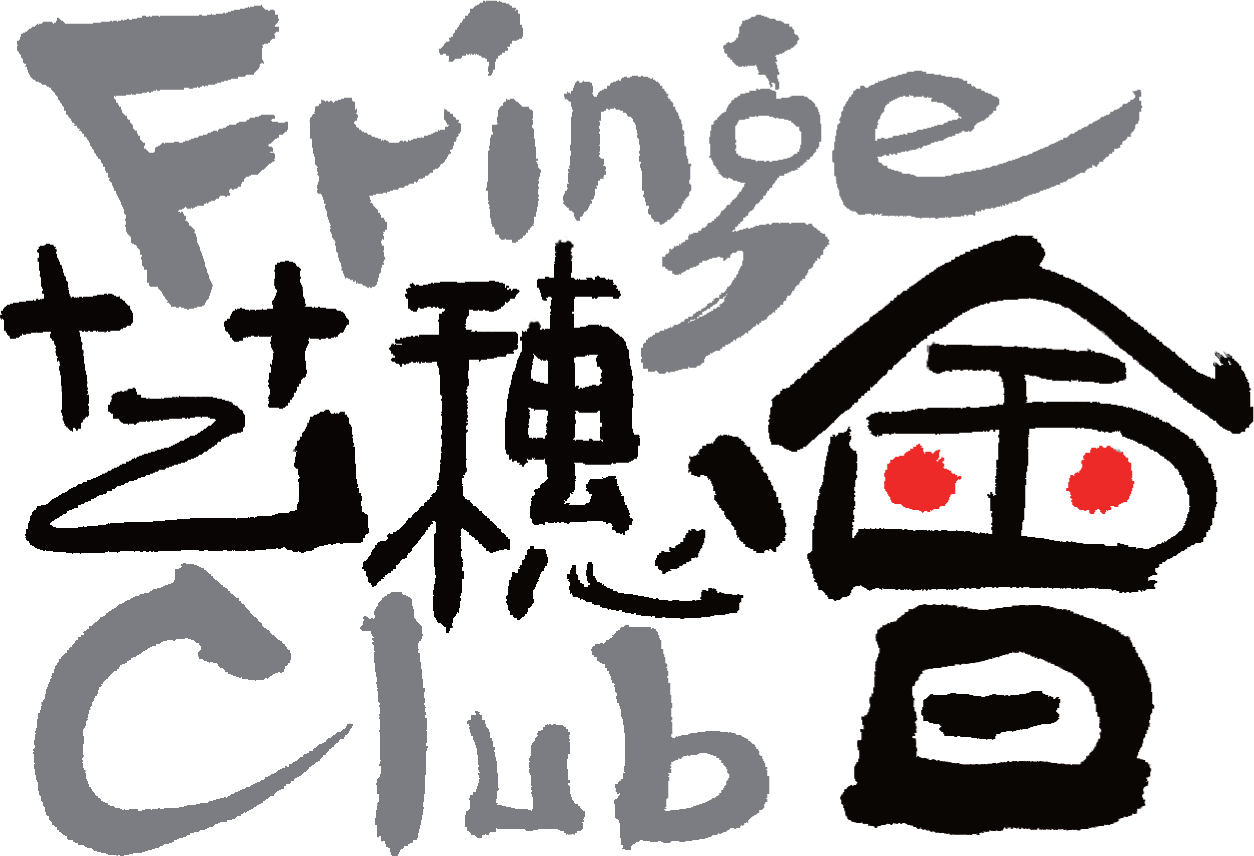Spotlight Hong Kong in Penang
Fringe Blog
Spotlight Hong Kong in Penang
2014-06-19 12:08 PM
15 June 2014 SCMP - Sunday Morning Post P.10 ARTS
The Fringe News
- Fringe Festival 2025 Press Conference
30-12-2024
- Fringe Club Unveils a New Chapter
28-12-2023
- Classics@Fringe Series: Opera Odyssey | Fringe Club x Hong Kong Grand Opera
04-07-2023
- The Vault Cafe is now OPEN! Feste x Fringe Pop-Up Collaboration
20-09-2022
- Fringe Merchandise - Fringenious
09-06-2022
- Fringe Club 40 Years Exhibition – Calling for Memories & Artworks
13-01-2022
- Literary Afternoon Tea
14-12-2021
- Literary Afternoon Tea - First Flush
09-07-2021
- Japanese Set Meal @Dairy
05-03-2021
- Veggie Lunch @Dairy
07-12-2020
- We'll Survive!
06-08-2020
- Fringe Club's 1983 LOGO TEE
03-08-2020
- 【Die Gartenimkerei - Raw Honey 🍯 Buy one, get one 50% off 】
22-07-2020
- Gyokuro【Uji tea delivered straight from Kyoto ✈ With Limited quantities 🍵 are available at Fringe Vault & Online】
30-06-2020
- Sencha -【Uji tea delivered straight from Kyoto ✈ With Limited quantities 🍵 are available at Fringe Vault & Online】
29-06-2020
- Wearing Mask in Theatre
22-06-2020
- Reopen on 21 April (Tue)
16-04-2020
- Closed for Spring Cleaning
03-04-2020
- Hottest Chili Story Part 2
23-03-2020
- Hottest Chili Story Part 1
17-03-2020
- Closed until 2 February
28-01-2020
- We wish you a prosperous and healthy Chinese Lunar New Year!
24-01-2020
- Merry Christmas & Happy New Year!
24-12-2019
- Jazz Teaching Kit
30-11-2019
- WANTED!
17-09-2019
- Removal of the Box-office Counter
13-08-2019
- Write Your Name
31-07-2019
- The Lady's Gone
02-07-2019
- Walk for Freedom
17-06-2019
- WANTED
23-05-2019
- Jazz Age II Party: This Side of Paradise
15-04-2019
- Fringe Club Building Renovation Project Completion Ceremony
11-04-2019
- Jazz Age II Party: This Side of Paradise
09-04-2019
- Jazz Age II Party: This Side of Paradise
01-04-2019
- Fringe Club x Alliance Française
25-03-2019
- This Side of Paradise Jazz Party@The Fringe – Blind Bird Discount!
11-03-2019
- Not Too Late
13-02-2019
- Happy Chinese New Year | CNY Opening Hours
04-02-2019
- Green Salad - Yasi
23-01-2019
- Colette Re-open
19-12-2018
- Ceramics ・ Tea Ceramic works by Lee Hsieh-Chih, Weng Shih-Chieh & Lai Hiao-Che Exhibition
18-12-2018
- WANTED!
04-09-2018
- JAZZ AGE Party @ The Fringe
24-08-2018
- JAZZ AGE Party @ The Fringe
21-08-2018
- JAZZ AGE Party - Blind Bird Discount!
07-08-2018
- Wanted! Full time or Part time Bartender
03-05-2018
- 【藝穗五月·Fringe May】
24-04-2018
- WANTED - Project Co-ordinator
12-04-2018
- Pop-up Symphonic Artbar
02-04-2018
- Outlier : Placemaking@the Fringe
22-03-2018
- Outlier : Placemaking@the Fringe
20-03-2018
- Outlier : Placemaking@the Fringe
19-03-2018
- Aftershow photo shoot with Sony Chan!
02-03-2018
- the Fringe Club Gallery is now available in the Art Basel period of March 29 – 31, 2018.
27-02-2018
- Fringe looks so good you want to take it home!
21-02-2018
- 【Call for Applications Now!】
12-01-2018
- Immersive Theatre: Lingering in Time
26-11-2017
- Reminder for Immersive Theatre: Lingering in Time
24-11-2017
- Wanted! Full time or Part time Bartender
02-11-2017
- Artbathing@the Fringe
01-11-2017
- 🎃Halloween @the Fringe
26-10-2017
- WE ARE RECRUITING!
19-10-2017
- Fringe Venue for Hire
29-09-2017
- Recruitment
22-09-2017
21-09-2017
- 【Call for Applications Now!】
01-09-2017
- 「創作時如實觀照自己,嚴謹對待,不拘泥於形式或盲從權威。」
22-08-2017
- 【Cheong gor's stool room X Fringe Club】
16-08-2017
- 藝穗會—借來的時間 - Metropop
14-08-2017
- A Love Poem
24-07-2017
- Notice: *MICFR tonight at 7pm*
23-07-2017
- Photo credit: John Fung
14-07-2017
- Susie Youssef is a comedian, actor, writer and improviser, starring on Australia television in programs such as ‘Whose Line Is It Anyway Australia’. With a warm and engaging style, you can’t help but love Susie on stage as she creates wonderful worlds through inventive stand-up and character comedy.
02-06-2017
- Colette's Artbar happy hour drinks from $30
17-05-2017
- Fringe Club Recruits: Service Staff, Barista, Bartender
10-04-2017
- One minute experience can change a kid's life.
01-04-2017
- Sold Out In 7 Minutes! C.J.Hendry @ the Fringe
21-03-2017
- RECRUIT: Fringe Club Arts Administration Internship
07-03-2017
- ''Happiness, not in another place, but in this place; not for another hour, but this hour." Walt Whitman
21-02-2017
- Happy Lunar New Year of the Rooster!
24-01-2017
- NOTICE: Hong Kong Ticketing service at the Fringe Club ONLY UNTIL Sat 14 Jan 2017
28-12-2016
- 【Xmas Secrets of Fringe】#2 Secret of the old documents
16-12-2016
- New Membership Package - more exciting artistic and cultural life!
13-12-2016
- 【Xmas Secrets of Fringe】#1 What's the best Xmas present?
08-12-2016
- 【20 Secrets of Fringe Club】#20
02-12-2016
- 🕵 Here comes【Guess & win a prize! 】again!
29-11-2016
- 【20 Secrets of Fringe Club】#19 More about Joe our master chef!
25-11-2016
- 【20 Secrets of Fringe Club】 #18 We started serving vegetarian lunch 30 years ago!
22-11-2016
- 【20 Secrets of Fringe Club】#17 How many steps are there altogether?
18-11-2016
- 【20 Secrets of Fringe Club】#16 Air vent special stage effect
16-11-2016
- 【20 Secrets of Fringe Club】#15 Performed by the street light
11-11-2016
- 【20 Secrets of Fringe Club】#14 The First Night Guard
10-11-2016
- 【20 Secrets of Fringe Club】 #13 The poet of Yasi
04-11-2016
- 【20 Secrets of Fringe Club】#12 Wild life on the Fringe🌱
03-11-2016
- Japan x Hong Kong: Ring-A-Ring-O' Rosie
01-11-2016
- 👻 Halloween Special 🎃【20 Secrets of Fringe Club】#11 Sighting in Circa 1913
28-10-2016
- 👻 Halloween Special 🎃【20 Secrets of Fringe Club】#10 Horror rumor in Dressing Room
27-10-2016
- 【20 Secrets of Fringe Club】 #09 Why did we name it Anita CHAN Lai-ling Gallery?
24-10-2016
- About shows cancelled
21-10-2016
- 【20 Secrets of Fringe Club】#08 Why is the Artbar on the roof called Colette's?
19-10-2016
- Thanks for supporting Fringe Tour on 15 Oct!
17-10-2016
- 【20 Secrets of Fringe Club】#07 Hard Times
15-10-2016
- 【20 Secrets of Fringe Club】#06 Attention Attention! Here comes the answers of Guess & Win a prize on last Thursday!
12-10-2016
- 👏🏻Fringe Tour has already started!🎈
11-10-2016
- 🕵【 Guess & win a prize! 】
07-10-2016
- 【20 Secrets of Fringe Club】#05 The Origin of our “Art+People=Fringe Club”
05-10-2016
- 3rd Docent Workshop Highlights
03-10-2016
- 【20 Secrets of Fringe Club】#04 Who design Fringe Logos?
30-09-2016
- 【20 Secrets of Fringe Club】#03 How is Fringe Club named?!
28-09-2016
- 2nd Docent Training finished!
26-09-2016
- 20 Secrets of Fringe: No.2 is...
22-09-2016
- Wow, 20 Secrets of Fringe Club!? Check out what's the Secret #1 about...
21-09-2016
- Happy ending to the first Docent Workshop!
15-09-2016
- A happy ending to the first series of Remarkable People Naked Dialogue!
03-09-2016
- Come to PLAY at Fringe Club this Saturday!
01-09-2016
- Call for Docent!
12-08-2016
- Happy ending to the second Naked Dialogue. See you on 20 Aug again!
09-08-2016
- Happy ending to the first Naked Dialogue. See you on 6 Aug again!
25-07-2016
- The Remarkable People Naked Dialogue – Lost & Found in Memory
20-07-2016
- "The Remarkable People Naked Dialogue" KJ Tee
08-07-2016
- "Enjoy Life" KJ | 23.07.2016 Naked Dialogue
29-06-2016
- A phenomenal success, completely selling out and being nominated for the prestigious Foster’s Newcomer Award.
02-06-2016
- 'Give this man citizenship... he’s sure to have more to contribute to the Australian comedy scene.'
26-05-2016
- Melbourne International Comedy Festival2016, 18-24 July 2016. See U Soon!
21-04-2016
- Nice to meet you at Willde Ng Photo Exhibition!
06-04-2016
- Taste the Arts
31-03-2016
- Temporary Closure Notice
02-03-2016
- Mime Lab Chairman - Owen Lee
01-03-2016
- Dancer - Andy Wong
25-02-2016
- Artist - David Fung
22-02-2016
- Presenter of Listen Up! - Koya Hizakasu
19-02-2016
- Guest Curator - Martin Fung
18-02-2016
- "Thank you for staging all these most wonderful events through the years.."
16-02-2016
- Man with three hands - Chung
15-02-2016
- Fri 5/2 Open Sesame Fringe Night! *Opening hours of Colette's & Vault would be changed.
18-01-2016
- We are recruiting!
06-01-2016
- Saxophone Lover - Timothy Sun, Saxophonist
04-01-2016
- Tulegur 2016 "Limitless" Tour
28-12-2015
- Still Wind - Joint Exhibition of Christopher Doyle & Xu Jing
18-12-2015
- Pepe's Cat Art Festival
27-11-2015
- 2015-16 Arts Venue Subsidy Scheme
09-11-2015
- Haunting Fringe Nights
20-10-2015
- Fringe Club Guided Tours (Part of Heritage Fiesta 2015)
16-10-2015
- Afternoon Tea@FringeVault
14-09-2015
- Arts Administration Internship
10-08-2015
- Comedian Dave Callan on RTHK's The Morning Brew
13-07-2015
- Exhibition of “The very happy wonderful celebration of the return of Artist Commune and the 18th anniversary of Hong Kong handover, with cheerful music and songs all over the world” Opening
01-07-2015
- Artist Commune x C&G x Fringe Club 1st Meeting
08-06-2015
- Try out New Menu @ Vault!
20-05-2015
- "Eat Light Feel Good" - Vegetarian Light Lunch Buffet @ Colette's
18-05-2015
- Happy Set-up Day - Squares & Circles Exhibition!
15-05-2015
- New Artworks by Artists Joe & Jimmy!
11-05-2015
- Benny in RTHK's Interview - "Artspiration"
24-04-2015
- Macbeth Casts Celebrating Sold Out Season!
21-04-2015
- Tropical Cyclone Signal No. 8NE...Hong Kong by Artist Jimmy Lau
13-04-2015
- Hanging up City Festival Posters Together!
01-04-2015
- Photographer and Jazz-Singer, Elaine Liu Introducing Her Series of "Water"
18-03-2015
- Benny with Huang Yulong!
17-03-2015
- 2015-2016 Venue Subsidy Scheme
17-03-2015
- Double Vision Opening!
11-03-2015
- Getting Ready for Tomorrow! - Double Vision Exhibition
10-03-2015
- Floating in the Wind by Lau Hok Shing, Hanison @ Double Vision
08-03-2015
- Vernissage - Double Vision: Yang Kai and Lau Hok Shing Hanison
06-03-2015
- Have A Good Laugh Guys!
27-02-2015
- Gloria Wishes Everyone Happy New Year of the Goat!
21-02-2015
- March Is The Fullest Month
17-02-2015
- "You Are My Irreplaceable Love"
13-02-2015
- "In Dreams We Are Free," said Jimmy Lau, artist @ Local Ginger
11-02-2015
- Lemme introduce to you Gloria and Anthony, our interns from CUHK!
05-02-2015
- Rent A Sunday @ theFringeClub!
03-02-2015
- Wanna have a bite?
29-01-2015
- "It's the first time that I did fully express myself as a musician when I performed at the Fringe," said Wong Ka Jeng, concert pianist
27-01-2015
- Asian Food, Cocktails & Art - Restaurant & Art Pop Up from Singapore!
26-01-2015
- Jimmy Lau: “A merry and free atmosphere, a well-managed nice place“
21-01-2015
- "Love its freshness here!"
20-01-2015
- "Nice Place, Nice People - Its's Where I Enjoy Lunch!'
16-01-2015
- Benefit Cosmetics - Product Launch @ Gallery
13-01-2015
- Dinner @ Colette's!
12-01-2015
- Love this GREEN!
08-01-2015
- New Year New Life:D
06-01-2015
- Most 10 Liked - Vote for the Fringe!
02-01-2015
- It's Bay @ Vault!
31-12-2014
- Step Up, and Read Us!
24-12-2014
- Sinfonietta's X'mas Lunch @ Colette's:D
22-12-2014
- Kids Spotting Their X'mas Card Designs @ Vault!
17-12-2014
- A Gift of Love:)
16-12-2014
- Our Honour - "Festive Korea" Commendation Award
15-12-2014
- “Artists in search of ghosts in fringe underground”
13-12-2014
- Meeting Fringe's New Volunteers Last Night!
11-12-2014
- Coffee Tasting with Ice & Benny!
10-12-2014
- A Grand Scene - BHA 15 for 15+ Architecture Exhibition Press Con
09-12-2014
- Secret Walls x HK Monster Grand Final!
08-12-2014
- Have a Nice Time with Pepe's Cats!
06-12-2014
- Eat Healthy - Vegetarian Light Lunch @ Colette's
05-12-2014
- When Vault Turns into a Cat Café...
03-12-2014
- Being Faust: Enter Mephisto @ Fringe Club
29-11-2014
- Food Journal @ Vault!
28-11-2014
- Wanna Know What's Joon Sharing With Us?
26-11-2014
- Happy Graduation, Our Interns!
25-11-2014
- Pasta is Back @ Vault!
24-11-2014
- A Decade, An Instant...
22-11-2014
- Check Out "Artspiration" x S2 (S square) A cappella
21-11-2014
- Oh it's Mumm Cellar Master Didier Mariotti at Circa 1913
18-11-2014
- Meeting Old Friends on the Swing!
17-11-2014
- Look Who's Here?!
12-11-2014
- "Standing Bird 2" - Dance in Freedom!
07-11-2014
- It's Tea Time, Everyone!
05-11-2014
- Working Holiday Jobs - F&B Staff Wanted
04-11-2014
- Explore the Mysteries of the Amber Room!
31-10-2014
- Artist Salon - Hong Ji-Yoon (Korea)
29-10-2014
- 1st day all-day breakfasts@ The Vault
02-09-2014
- Come and Join Us!
19-08-2014
- And the winners are...
13-08-2014
- "Spotlight Hong Kong in Penang" - POP UP Giveaways!
05-08-2014
- The Fringe Club upholds and supports what the arts stand for
02-07-2014
- Spotlight Hong Kong in Penang
19-06-2014
- 藝穗會五月節目之分享會 @ Fringe Circa 1913
15-05-2014
- Can you TELL ME? Performance - Video-Poems
30-04-2014
- Recruitment
01-03-2014
- Colette's @ the Fringe NOW OPEN, CHECK IT OUT!
17-02-2014







